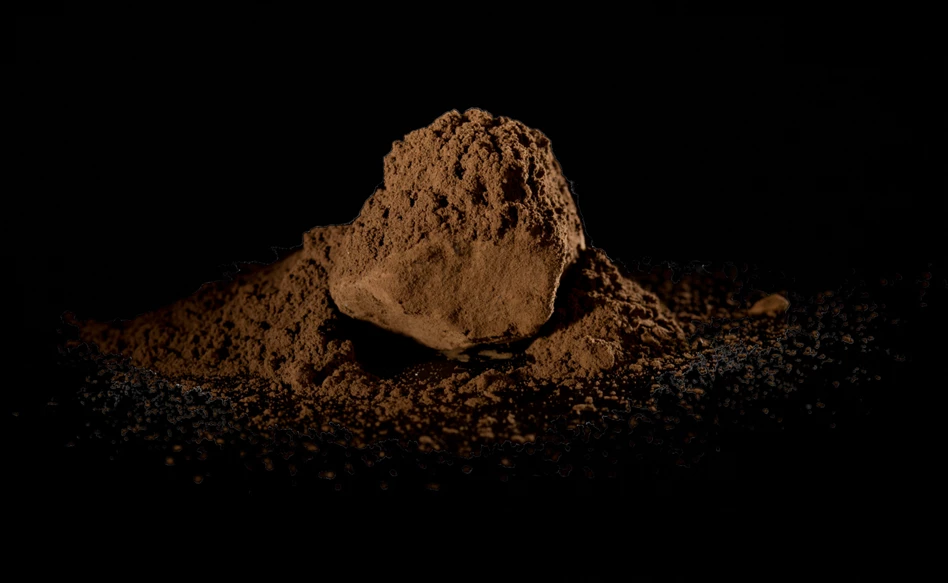
Asphaltum: ‘and when he heard what his brown was made of, he gave all of his tubes of this colour a decent burial’
Asphalt, also referred to as bitumen, is a typical example of a colour of which the historical name has remained, but that – fortunately – has not been made of real asphalt for a long time now. The history of this colour is somewhat sinister. Up until the beginning of the twentieth century one way of obtaining the brownish black pigment was by grinding down Egyptian mummies. It wasn’t until the early twentieth century that an alternative was developed, and mummies and natural asphalt gave way to a brownish black based on modern and highly reliable pigments.
Asphaltum: ‘and when he heard what his brown was made of, he gave all of his tubes of this colour a decent burial’
The origins of the colour lie in ancient Egypt, where asphalt was one of the materials used to mummify the dead. The word mummy is derived from the Arab word ‘mumya’, which literally means bitumen. In order to preserve the bodies for eternity, they were wrapped in linen swathes that had been soaked in natural asphalt. The asphalt penetrated the flesh and bones, coloured everything brown and ensured for an excellent preservation. Mummies of pharaohs and other high-ranking persons were buried in the tombs, whereas those of ordinary people and sacred animals such as cats and monkeys disappeared in caves or in the hot desert sand. It is not known who came up with the idea, but as of the seventeenth century these mummies were dug up and exported to Europe on a large scale. Here they were ground up in large ‘mummy mills’ to produce a powder that was used both in paint and in medicine.
‘Revenge of the mummies’
Not everyone was familiar with the origins of this extraordinary brownish black powder. The story goes that a nineteenth century artist was so upset when he learned that his paint was made of dead bodies, that he buried the tubes of paint in the garden to give them a ‘dignified’ burial. By the end of the nineteenth century the supply of Egyptian mummies was so extensive that they served as fuel for steam trains. What’s more, in America the swathes were used as an ingredient in the paper industry, but not for long. A cholera epidemic broke out among those people who came into contact with the paper, and so the epidemic was attributed to the ‘revenge of the mummies’.
Painting killer
Asphalt is a pitch-like substance that remains after the evaporation of the volatile elements of petroleum that has come to the surface. There are, for example, several places in the world where there are asphalt lakes. The largest lake is located on Trinidad, and is still a source of natural bitumen. In the Middle East asphalt used to be extracted mainly from the Red Sea, where it had ended up in solidified form after seeping through fissures and hot springs. Alongside ground up mummies, this natural asphalt was also used for the preparation of oil paint. Linseed oil would be heated, after which asphalt was dissolved in this. Asphalt should therefore be regarded as a dye (pigments applied in oil paint may not dissolve in the oil), with all its negative properties. Dyes have a tendency to bleed; the colour penetrates other paint layers or spreads inadvertently to the surrounding area, also when the paint layers are dry. But asphalt does much more! It causes the paint film to wrinkle and contract until there is little left. What’s more, asphalt prevents the paint from drying throughout, which can then sag as a consequence when temperatures increase. In short, a disaster for every oil painting.
Reliable pigments
It is not surprising therefore that alternatives were sought in the end. Ground mummy and natural asphalt were still used for oil paint until the beginning of the twentieth century, but have since disappeared from the range of artists’ paints. The colour Asphalt in the Rembrandt range of oil paints has for generations now been made on the basis of modern and highly reliable pigments.
Royal Talens has the colour Asphaltum in the following product ranges:
Other Colour stories

Ultramarine
Colour stories
Magenta
Colour stories
Indian Yellow
Colour stories
Carmine
Colour stories
Gamboge
Colour stories
Indigo
Colour stories
Ochre
Colour stories
White
Colour stories
Cobalt Blue
Colour stories
Vermillion
Colour stories
Asphaltum
Colour stories

